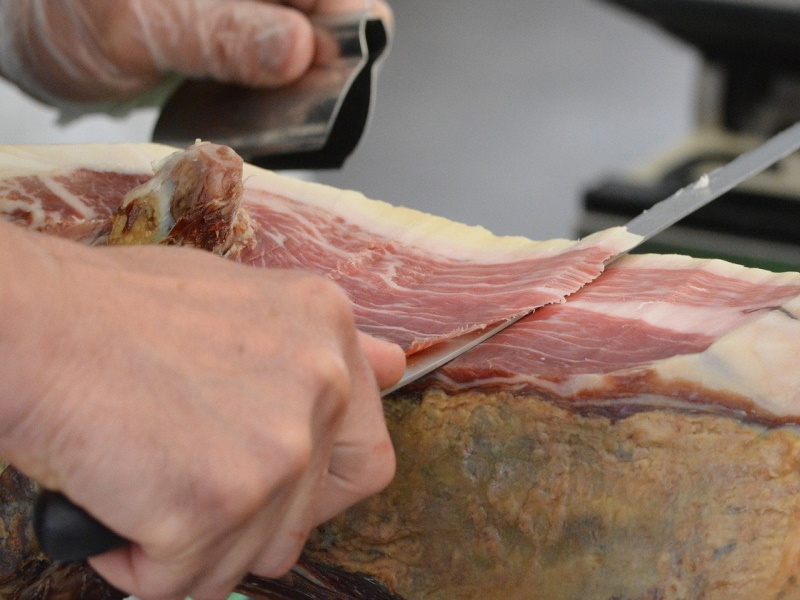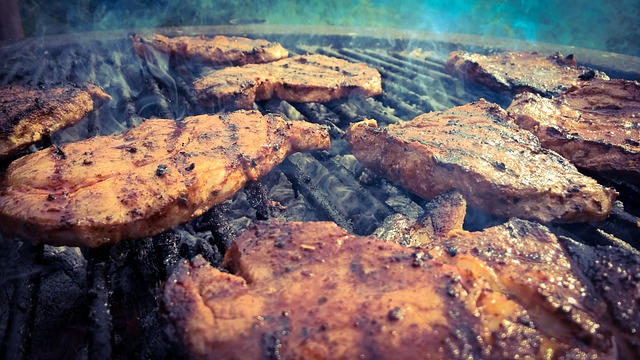Smoking was traditionally used as a meat preservation method. But in recent times, it has evolved to become a method of cooking meat. Commonly known as barbecuing, smoking entails heating meat slowly and indirectly, for 10 to 16 hours. The smoke emitted by the fire will then give unique flavors and texture to the meat. However, smoking meat is an art that requires plenty of patience and time. If you are planning to smoke meat while camping outdoors, here are some tips to help you achieve the perfect flavors.
Choose the Right Smoker
Smokers are outdoor cooking appliances, designed to maintain low cooking temperatures and produce smoke for long periods. A good smoker should grill meat efficiently, giving it a delicious, juicy taste. There are different types of smokers on the market that you can purchase for your camping trips. They include water electric smokers, propane smokers, wood smokers, charcoal smokers, and pellet smokers, among others. For camping, you should choose a smoke that can use readily available fuel. Also, camping smokers should be compact and portable.
If you didn’t carry a commercial smoker, you can still enjoy smoked meat while camping outdoors. You can easily create one using locally available materials. First, you will need a fire pit. To make a fire pit, you will dig a hole that is approximately 2 or 3 feet deep. It should also have a width of 2 to 3 feet. After digging the pit, you should stack its bottom with small twigs and then light the fire. After the twigs have ignited, you should then begin adding wood chips and larger pieces of wood at a time. You should then fill this hole with medium-sized pieces of wood halfway or three-quarter full and then allow them to burn down to coals. Your improvised smoker is now ready. Hardwood varieties like oak or maple are the best for smoking meat using this method since they produce long-lasting coals. Furthermore, maple and coal will not leave your meat with strange tastes. You should avoid woods like juniper, willow, and pine since they are filled with resin material.
It’s important to maintain a constant temperature of around 225 degrees when smoking meat. To achieve this temperature, you simply need to keep more wood to your campfire. However, ensure that the wood you are adding encounters your meat since it might destroy the flavor. The grate for your improvised smoker should be made from green branches. At some point, even the green branches will dry out. Therefore, you need to ensure they don’t catch fire. If they do, your meat will fall on the coals.
Select Your Cuts Carefully
You will only enjoy smoked meat if you choose the right cuts. However, that doesn’t mean that you should choose your best cuts of pork or beef on the smoker. Cuts like lean roast or pork tenderloin should not be smoked. You can simply cook these cuts using ordinary methods, instead of wasting wood on them. Besides, you will not enjoy the flavors and the benefits that come with smoked meat if you choose these cuts since the smoking process will dry them out, making them inedible.
When selecting meat for smoking, you should always make sure that it comes from a high-quality source. As much as discount pork from the grocery store might be cheaper, there is a high chance its full of fillers and saline solution, making it a bad choice for smoking. Instead of buying discount meat from the grocery store, you should head out to a local butcher and buy fresh meat. Also, you should opt for tougher, fattier cuts instead of tender pieces. Basically, the barbecue was invented to make use of those tough, cheap cuts of meat that nobody wants to buy. Smoking them low and slow on the smoker will turn them into soft, tender, juicy and highly delicious. Cuts with plenty of collagen and fat are perfect for smoking. They will provide the adequate moisture needed to tenderize them slowly. In short, don’t shy away from purchasing cheaper and tougher pieces of meat. As long as you give them adequate heat and allow them adequate time on the smoker, you will end up with tender, delicious and juicy cuts of meat. Some of the most popular cuts for smoking include:
- Brisket: This is probably the most popular cut that you will find in most barbecue joints. It’s chewy, and cheap, making it a perfect choice for grilling. Besides that, it’s hardness makes it hard to prepare or cook with other methods. But if you smoke it for approximately 10 to 12 hours, you will end up with a delicious and tender cut.
- Pork butt: Also known as Boston butt, picnic shoulder, or pork shoulder, this cut is also a popular choice for grilling and smoking. It features plenty of connective tissue and fat, resulting in a soft juicy cut after smoking. This cut is also cheaper than brisket.
- Ribs: Ribs have a balanced blend of meat, connective tissue and fat, making them a good choice for barbecuing. Unlike other cuts, they don’t require much time on the smoker. However, you will need some time to learn how to smoke them properly. Therefore, if you are smoking meat for the first time, you should explore other options like the pork butt.
Choose Your Wood
The type of wood that you will use when smoking meat will play a role in its color and flavor. As much as you can use almost all types of wood, not all smoke will produce the desired flavors. Therefore, it’s important to pay attention to the type of wood that you use for smoking meat. Some of the most popular types of wood that are used for smoking meat include:
Oak
Oak is the go-to wood for most people when it’s time to smoke meat. If you are an amateur in smoking, oak is a good place to start. It will give your cuts a medium to strong flavor. You can use it for smoking sausages, brisket, beef or lamb.
Hickory
This is one of the most versatile options for smoking meat. Hickory will lend savory, sweat, and hearty flavors to your cuts. However, avoid using too much of it, since it can result in bitter flavors. Hickory is best used to smoke larger cuts of pork shoulders and ribs. It can be used for smoking all types of red meat, as well as poultry.
Pecan
This is a slow-burning type of wood, which gives the meat a fruity, sweet flavor. It’s identical to hickory in most aspects. It’s best used to smoke large cuts like pork roast and brisket. However, you can also mix it with other types of wood when smoking poultry, fish, and chops.
Mesquite
Mesquite is filled with intense flavors, which means it lends a bitter taste to your meat. It’s best used for grilling. If not used properly, it will easily overpower the flavors in your meat. It should not be used with larger or tougher cuts that need longer cooking times. It’s highly advisable to mix it with other types of wood.
The type of wood that you use to smoke meat will depend on the cut and the cooking times. For heavier, tougher cuts such as pork and beef, you should opt for hardwood varieties. If you are smoking delicate meats like fish and chicken, you should use lighter hardwood. Avoid smoking meat with softwood species like cedar and pine. Softwood varieties have too much resin, which means they can destroy your meat.
Smoke it Low and Slow
Low and slow is the perfect combination when it comes to smoking meat. Remember that you are smoking meat, and not cooking it. Therefore, don’t try to rush the process. If you do, your meat will not have that smoked flavor. Instead, it will taste like meat cooked via conventional methods. You need to keep the temperature while ensuring that your meat gets ample time above the goals. Ensure there are no rising flames below the meat. Normally, the meat will take approximately 2 to 6 hours for it to be ready. It can take even take more time, depending on its thickness, type, and temperature of your smoker.
If you are smoking meat on a smoker or a campfire for the first time, you might not achieve perfect results. However, there is nothing to worry about. Smoking meat is an art that takes time to master and perfect. You should start with thinner pieces of meat, and then proceed to thicker cuts as you gain more skills. If you are using a grate, you should adjust the distance between the meat and the coals regularly, depending on how the meat is smoking. However, don’t lower the grate too much such that the meat is almost touching the coals. If you do that, it will char. On the other hand, the grate should not be too high above the meat or the meat will take forever to be ready. After some time, fat from the meat will start dripping on the coals, causing a flare-up. Therefore, you will need to keep a bottle of water nearby, which you will use to put off or control these flare-ups.
Whether you are smoking meat over an improvised grill or you are using a commercial meat smoker, you should never leave it unattended. Sparks might fly off from the smoker and start a forest fire. You should also keep a close eye on the color of the smoke coming from the fire. If the fire is producing black smoke, then it’s a sign that it’s not getting adequate ventilation. Check how you’ve set up the smoker and ensure that it’s producing a clean stream of white smoke. White smoke will give your meat delicious, earthy flavors and tastes while black smoke will ash your meat and cause a terrible taste.
Closing Remarks
Smoking meat entails more than just placing meat on a grill. It requires proper selection of a cooker, choosing the right cuts and smoking it using the right techniques. Smoking meat is a process that requires years of practice to master. But once you master it, the effort will be worth it. You will enjoy delicious, tasty and flavor-filled cuts of meat, during your camping trip in the wilderness.





0 comments